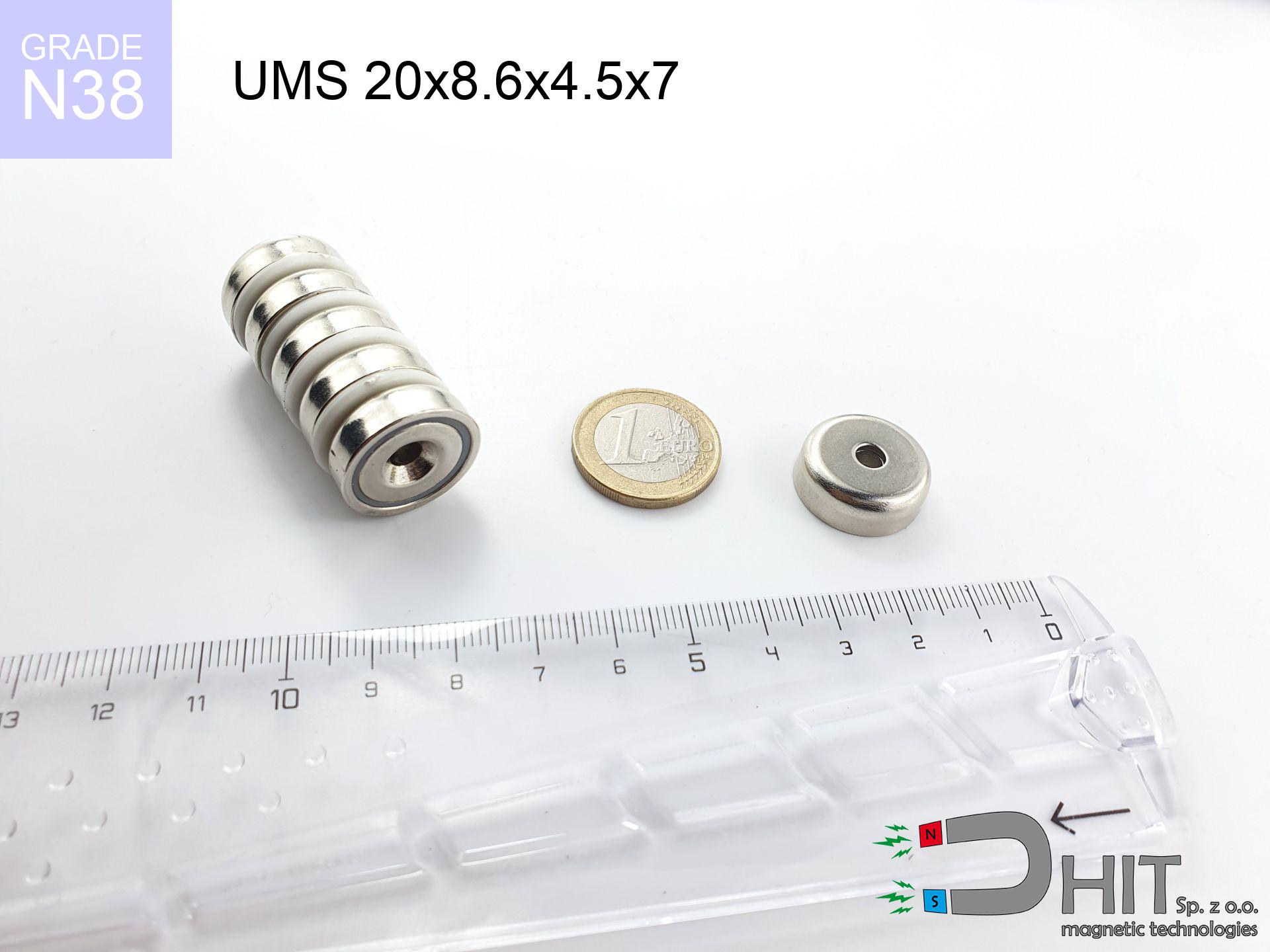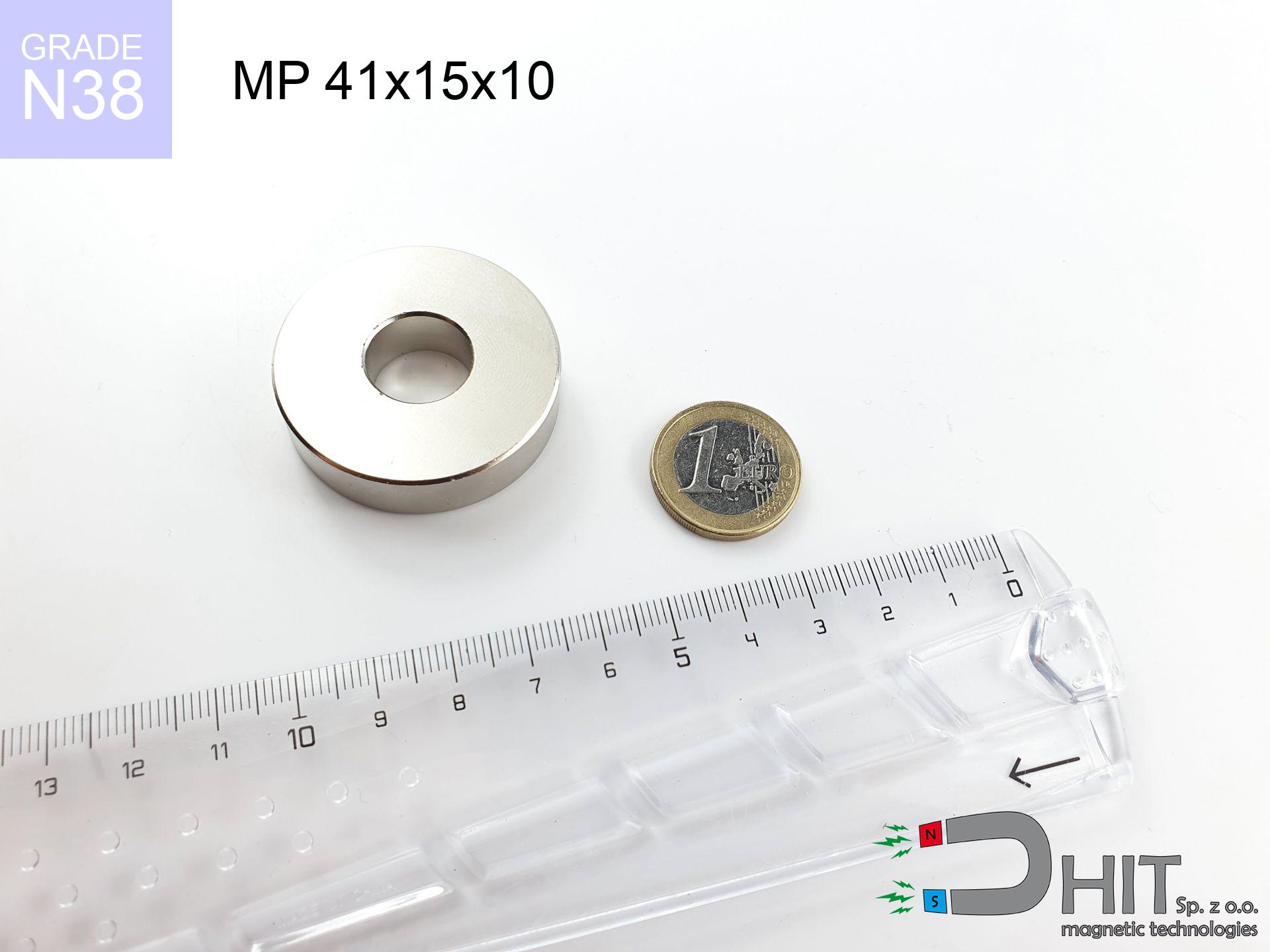UMGGZ 34x6 [M4] GZ / N38 - rubber magnetic holder external thread
rubber magnetic holder external thread
Catalog no 340311
GTIN: 5906301814733
Diameter Ø [±0,1 mm]
34 mm
Height [±0,1 mm]
6 mm
Weight
26 g
Load capacity
7.7 kg / 75.51 N
9.84 ZŁ with VAT / pcs + price for transport
8.00 ZŁ net + 23% VAT / pcs
bulk discounts:
Need more?Want to negotiate the price?
Call us +48 22 499 98 98 or write via form on the contact page. Test the magnet's power with our power calculator.
Orders placed by 14:00 are shipped the same day.
UMGGZ 34x6 [M4] GZ / N38 - rubber magnetic holder external thread
Magnetic properties of material N38
Physical properties of NdFeB
Shopping tips
Advantages as well as disadvantages of neodymium magnets NdFeB.
In addition to immense strength, neodymium magnets have the following advantages:
- They do not lose their power (of the magnet). After about 10 years, their power decreases by only ~1% (theoretically),
- They are exceptionally resistant to demagnetization caused by an external magnetic field,
- Thanks to the shiny finish and nickel, gold, or silver coating, they have an aesthetic appearance,
- They exhibit extremely high magnetic induction on the surface of the magnet,
- Thanks to their high temperature resistance, they can operate (depending on the form) even at temperatures up to 230°C and above...
- The ability for precise shaping and customization to specific needs – neodymium magnets can be produced in a wide range of shapes and sizes, which amplifies their universality in usage.
- Key role in modern technologies – are used in HDD drives, electric motors, medical equipment or very modern machines.
Disadvantages of neodymium magnets:
- They can break when subjected to a strong impact. If the magnets are exposed to impacts, we recommend using magnets in a metal holder. The steel housing in the form of a holder protects the magnet from impacts, and at the same time increases its overall strength,
- Magnets lose their power due to exposure to high temperatures. In most cases, when the temperature exceeds 80°C, these magnets experience permanent loss in strength (although it is worth noting that this is dependent on the shape and size of the magnet). To avoid this problem, we offer special magnets marked with the [AH] symbol, which exhibit high temperature resistance. They can operate even at temperatures as high as 230°C or more,
- Due to their susceptibility to corrosion in a humid environment, we suggest using waterproof magnets made of rubber, plastic, or other moisture-resistant materials when using them outdoors,
- The use of a cover - a magnetic holder is recommended due to the limited production capabilities of creating threads or complex shapes in the magnet
- Possible danger associated with microscopic parts of magnets are risky, when accidentally ingested, which is crucial in the context of children's health. It's also worth noting that tiny parts of these products have the potential to be problematic in medical diagnosis after entering the body.
Precautions
Neodymium magnets are among the most powerful magnets on Earth. The astonishing force they generate between each other can shock you.
To handle magnets properly, it is best to familiarize yourself with our information beforehand. This will help you avoid significant harm to your body and the magnets themselves.
Dust and powder from neodymium magnets are flammable.
Avoid drilling or mechanical processing of neodymium magnets. If the magnet is crushed into fine powder or dust, it becomes highly flammable.
Neodymium magnets are not recommended for people with pacemakers.
Neodymium magnets produce strong magnetic fields that can interfere with the operation of a heart pacemaker. However, if the magnetic field does not affect the device, it can damage its components or deactivate the device when it is in a magnetic field.
Neodymium magnets can demagnetize at high temperatures.
Although magnets have shown to retain their effectiveness up to 80°C or 175°F, this temperature may vary depending on the type of material, shape, and intended use of the magnet.
Magnets are not toys, youngest should not play with them.
Not all neodymium magnets are toys, so do not let children play with them. In such a situation, surgery is necessary to remove them. In the worst case scenario, it can result in death.
Never bring neodymium magnets close to a phone and GPS.
Magnetic fields can interfere with compasses and magnetometers used in aviation and maritime navigation, as well as internal compasses of smartphones and GPS devices. There are neodymium magnets in every smartphone, for example, in the microphone and speakers.
Under no circumstances should neodymium magnets be placed near a computer HDD, TV, and wallet.
The strong magnetic field generated by neodymium magnets can damage magnetic media such as floppy disks, video tapes, HDDs, credit cards, magnetic ID cards, cassette tapes, etc. devices. They can also damage videos, televisions, CRT computer monitors. Do not forget to keep neodymium magnets at a safe distance from these electronic devices.
Neodymium Magnets can attract to each other due to their immense internal force, causing the skin and other body parts to get pinched and resulting in significant injuries.
Neodymium magnets will bounce and contact together within a radius of several to around 10 cm from each other.
The magnet coating contains nickel, so be cautious if you have a nickel allergy.
Studies clearly indicate a small percentage of people who suffer from metal allergies such as nickel. An allergic reaction often manifests as skin redness and rash. If you have a nickel allergy, try wearing gloves or avoid direct contact with nickel-plated neodymium magnets.
Magnets made of neodymium are extremely delicate, they easily crack as well as can crumble.
Neodymium magnets are characterized by significant fragility. Neodymium magnets are made of metal and coated with a shiny nickel surface, but they are not as hard as steel. In the event of a collision between two magnets, there may be a scattering of fragments in different directions. Protecting your eyes is crucial in such a situation.
Warning!
So that know how strong neodymium magnets are and why they are so dangerous, see the article - Dangerous very strong neodymium magnets.

![Powerful magnet holder with rubber coating UMGGZ 34x6 [M4] GZ / N38 Powerful magnet holder with rubber coating UMGGZ 34x6 [M4] GZ / N38](https://cdn3.dhit.pl/graphics/banners/magnet.webp)
![UMGGZ 34x6 [M4] GZ / N38 - rubber magnetic holder external thread](https://cdn3.dhit.pl/graphics/products/umg-34x6-m4-gz-rad.jpg)





